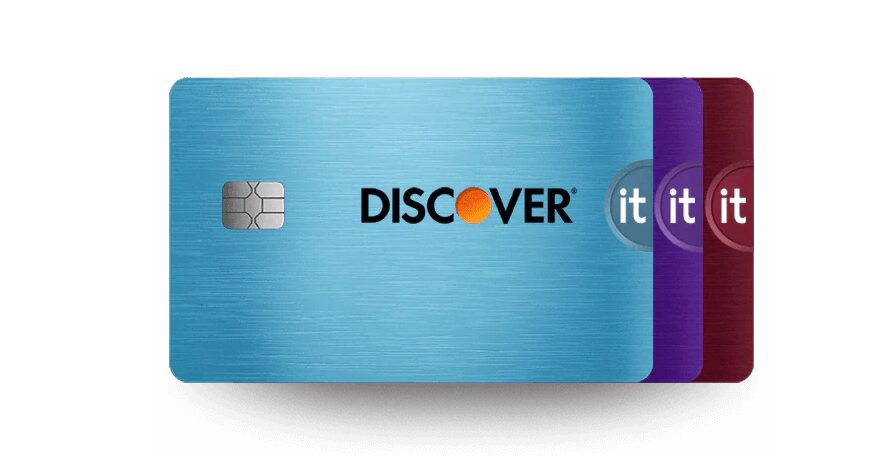The Future of Digital Payments: Trends and Innovations in the USA

The Evolution of Financial Transactions
The landscape of financial transactions is rapidly changing, ushering in new opportunities and challenges for consumers and businesses alike. As we move deeper into the digital age, it’s crucial to embrace and understand the technologies reshaping our payment systems. With every advancement, we have an opportunity to take control of our financial futures. This evolution is not merely a matter of technology, but a transformation of how we interact with money itself.
Emerging Trends to Watch
- Contactless Payments: The adoption of Near Field Communication (NFC) technology has become a game-changer, making transactions not only quicker but also safer. For example, many stores and restaurants now allow customers to simply tap their cards or smartphones at checkout, significantly reducing the time spent in queues. This convenience is not just a luxury; it enhances safety by minimizing physical contact and the handling of cash, which has become increasingly important in today’s health-conscious environment.
- Cryptocurrency Adoption: With the rise of Bitcoin, Ethereum, and other digital currencies, businesses such as Starbucks and Overstock are setting a precedent by accepting cryptocurrencies as legitimate forms of payment. This movement signals a broader acceptance of digital currencies in mainstream commerce, empowering consumers with more options and ushering in a new era of financial freedom. The volatility of cryptocurrencies may pose risks, yet their increasing validity opens doors for investment and wealth-building opportunities.
- Mobile Wallets: Applications like Apple Pay, Google Wallet, and Samsung Pay are transforming our smartphones into digital wallets. Users can store their credit cards, loyalty cards, and even tickets for events, streamlining payment processes. This convenience empowers consumers to manage their finances better while reflecting a shift towards cashless transactions in cities across the United States, where the younger generations are embracing digital solutions.
These innovations are not just about convenience; they offer a chance for greater financial inclusivity. With easier access to payment technologies, more people, including those from underserved communities, can engage in the economy. This inclusivity supports small businesses that might otherwise struggle to compete. Imagine a local farmer’s market or a small café being able to accept digital payments, thus reaching a wider customer base and thriving like never before.
Building a Responsible Financial Future
As we navigate these changes, it is crucial to remain mindful of our financial habits. Leveraging these technologies allows us to make more informed choices regarding spending and saving. By integrating budgeting apps and financial management tools available today, individuals can track their expenses in real time, helping to cultivate a responsible approach to finances.
Educating ourselves on these advancements will empower us to take charge of our financial destinies. It’s not just about keeping up with technology—it’s about utilizing it to foster a healthier relationship with money. We can embrace this journey of financial literacy, ensuring our efforts lead to a more secure and prosperous future.
As we explore the trends and innovations shaping the future of digital payments in the USA, let’s embrace the potential these systems hold. Together, we can participate in this exciting new chapter while making conscious financial decisions that have lasting impacts on our lives and communities.
Shaping a New Payment Landscape
The future of digital payments in the United States is an exhilarating confluence of technology, user experience, and financial equity. As we stand at the intersection of innovation and necessity, it’s essential to recognize how these trends not only streamline transactions but also enhance our overall financial health. By understanding the motivations behind these advancements, we can harness their potential to foster a more connected and equitable economic environment.
Digital Wallet Integration and Convenience
One of the most significant trends revolutionizing our approaches to payment is the integration of digital wallets. These platforms consolidate various payment methods into a single accessible interface, allowing consumers to store everything from debit and credit cards to loyalty programs. This centralization not only simplifies the purchasing experience but also encourages users to make more informed financial decisions. Imagine being able to see all your spending patterns directly through your digital wallet, allowing you to plan your purchases and manage your budget better.
- Increased Security: Digital wallets employ advanced encryption and biometric authentication methods, making it far more difficult for fraudsters to access personal information. This heightened security reassures consumers, paving the way for greater adoption.
- Seamless Transactions: The rise of one-click payments means that buying is becoming less of a chore. Whether it’s ordering your favorite takeout or purchasing tickets to a concert, the frictionless experience enhances consumer satisfaction and encourages spending.
- Rewards and Cash Back: Many digital wallets offer incentives such as cashback or discounts tailored to the user’s spending habits, thereby not only simplifying transactions but also transforming them into opportunities for savings.
Moreover, as digital wallets gain traction across various demographics, we see a shift in the way even the most traditional businesses contact their customers. From farmers’ markets to tutoring services, accepting mobile payments is now a viable option that can significantly increase customer engagement and loyalty. This trend highlights the evolving role of local businesses in a digital economy and demonstrates that adopting these tools can lead to meaningful growth and sustainability.
Decoding Financial Literacy in a Digital Age
As we embrace these cutting-edge payment solutions, an underlying message resounds: the need for financial literacy is more crucial than ever. With the dynamics of spending changing so rapidly, understanding the tools at our disposal becomes a powerful asset. Consumers are empowered to make decisions that reflect their values, whether that means prioritizing budgeting, conscientious spending, or investing in sustainable options.
Being proactive in learning about these payment technologies gives individuals the tools necessary to take control of their financial destinies. As we navigate this evolving payment landscape, it’s an opportune moment to reflect on our spending habits, enhance our financial knowledge, and most importantly, engage in responsible decision-making practices. This journey toward responsible financial habits isn’t merely about avoiding debt; it’s about embracing a mindset that views money as a means to create opportunities for ourselves and our communities.
Empowering Financial Inclusion Through Technology
In a rapidly advancing financial landscape, one of the most inspiring trends is the drive towards financial inclusion. Technology is breaking down traditional barriers, allowing wider access to digital payment systems for previously underserved populations. This movement is about more than just convenience; it’s about creating equitable access to financial services that foster economic empowerment and social justice.
Expanding Opportunities for the Unbanked
Despite the growth of digital payments, millions in the United States remain unbanked or underbanked. These individuals often lack access to essential financial services that can provide them with a safety net or an opportunity to truly participate in the economy. However, innovative solutions such as prepaid cards, mobile banking applications, and blockchain technology are emerging as viable pathways toward financial inclusion. For instance, prepaid cards allow users to make purchases and receive payments without the traditional requirements of a bank account. This opens up new possibilities for those who might not have access to conventional banking.
- Peer-to-Peer Payment Platforms: Services like Venmo and Cash App have transformed how individuals share money with one another. These platforms allow instant payments and fund transfers, enabling users to manage their finances more flexibly.
- Cryptocurrency and Decentralized Finance: As cryptocurrency becomes more accepted as a medium of exchange, individuals can leverage these technologies to engage in transactions globally, regardless of their geographical limitations. Innovations within the DeFi (Decentralized Finance) space empower users to not only transact but also invest, borrow, and earn interest in a way that was previously unattainable.
- Education and Support Initiatives: Organizations are implementing educational programs to teach financial literacy and responsibility, equipping individuals with the skills needed to navigate digital payments and take charge of their financial futures.
These developments are not merely transactional innovations; they represent a significant shift in how we think about banking and the role it plays in our lives. Financial institutions are recognizing the importance of reaching out to unbanked communities, understanding that inclusivity is good for everyone. By leveraging technology, we ensure that financial services are accessible to all, creating an environment where economic participation is possible for everyone.
The Rise of Contactless Payments and the Convenience Factor
Another future-forward trend that deserves attention is the increasing prevalence of contactless payments. The COVID-19 pandemic has accelerated the widespread use of technology that allows consumers to pay with a simple wave of their smartphone or card. This heightened convenience transcends just saving time; it enhances the overall shopping experience and promotes hygiene—an important factor in today’s world.
Retailers and service providers are investing heavily in contactless technology to meet consumer demands for a modern, streamlined experience. Fast casual dining establishments, grocery stores, and even public transportation systems are adopting this technology to reduce friction in transactions. The ease of contactless payments encourages consumers to make purchases they might have otherwise postponed, thus stimulating economic activity and bolstering local economies.
As we embrace these innovations, it is vital for consumers to harness these tools responsibly. Understanding the implications and benefits of adopting these payment technologies can empower individuals to explore their financial options fully. In this new age of digital payments, we have the opportunity to reshape not just our own economic futures but also the economy as a whole. Each swipe, click, and tap serves as a step towards a more empowered, informed, and connected society—one where financial opportunities belong to all, regardless of background or circumstance.
Looking Ahead: Embracing a Digital Future
As we navigate the dynamic landscape of digital payments, it becomes increasingly clear that the future is bright with possibilities. Innovations such as financial inclusion initiatives, the rise of contactless payments, and the integration of cryptocurrency into daily transactions are reshaping how we think about money and financial services. The responsibility now lies with us, the consumers, to utilize these advancements thoughtfully and intentionally.
The emphasis on inclusive access is not just a technological advantage; it’s a moral imperative that helps bridge the gap for those omitted from conventional banking systems. As more people gain access to digital payment solutions, we stand to fortify local economies and enhance community resilience. Moreover, contactless payments elevate the role of convenience, allowing consumers to engage in a fluid and efficient purchasing experience—one that seamlessly integrates into our lives.
In this pivotal era, it is essential for individuals to prioritize financial literacy and responsibility. By understanding the tools at our disposal and making informed choices, we can capitalize on the benefits of digital payments while consciously shaping our financial future. From each transaction that we conduct, we have the potential to inspire change, encourage growth, and promote a more interconnected society.
As we stand on the cusp of this digital revolution, let us embrace these innovations and advocate for a world where everyone has the means to thrive in the evolving economic landscape. Together, we can transform not just our financial narratives but also set a new standard for equity and accessibility in payments—paving the way for a brighter, more inclusive tomorrow.
Related posts:
How to open a digital bank account in the USA without bureaucracy
The Intersection of Technology and Financial Regulation: Challenges and Opportunities
The Role of Fintechs in the Modernization of the Community Banking Sector in the USA
The Impact of Fintechs on Financial Inclusion in the USA
Digital platforms to send money from Brazil to the USA
Necessary Documents to Apply for a Personal Loan in the United States

Beatriz Johnson is a seasoned financial analyst and writer with a passion for simplifying the complexities of economics and finance. With over a decade of experience in the industry, she specializes in topics like personal finance, investment strategies, and global economic trends. Through her work on Web Dinheiro, Beatriz empowers readers to make informed financial decisions and stay ahead in the ever-changing economic landscape.







